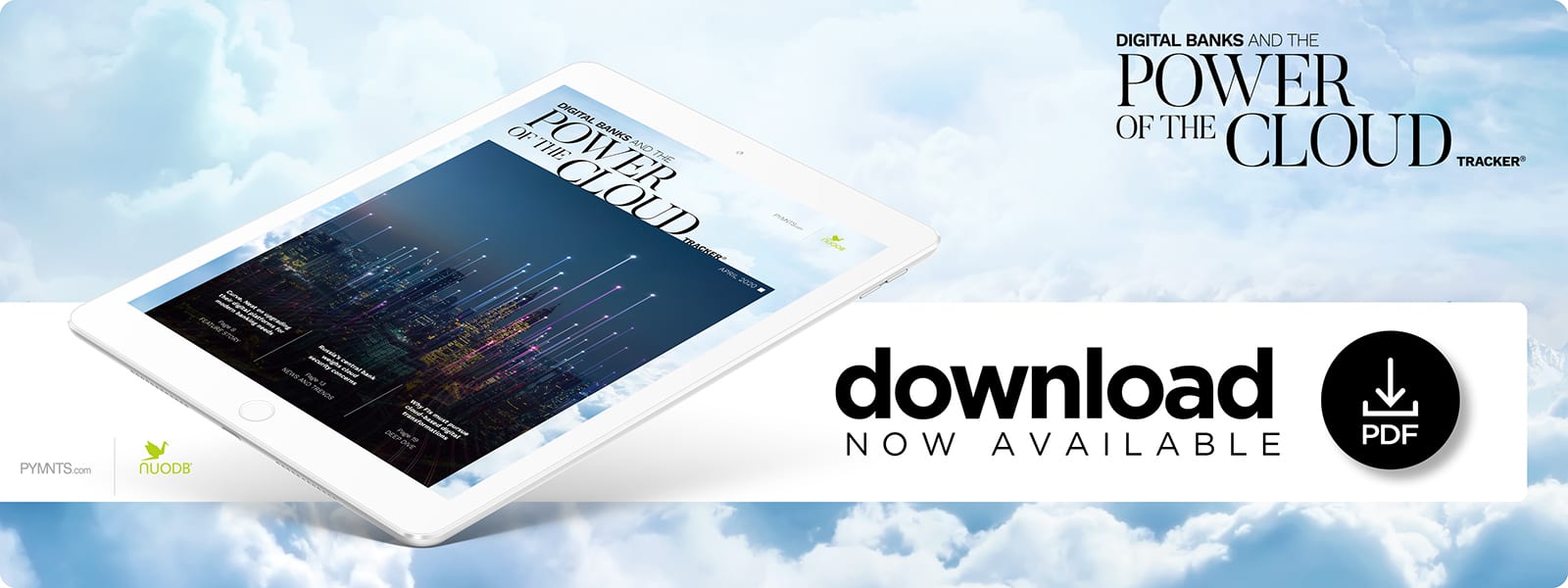How Curve, Neat Are Keeping Up With Customers’ Digital Banking Needs

For legacy financial institutions (FIs), winning customers’ loyalty often comes down to offering innovative products and service. But with 80 percent of FIs still using legacy core banking systems, digital banks and FinTechs are seemingly at an advantage. In the Digital Banks And The Power Of The Cloud Tracker, Nathalie Oestmann, chief operating officer at aggregated payment card provider Curve, discusses how she thinks flexible, cloud-based infrastructure puts digital banks at an advantage.
Digital transformation is essential for financial institutions’ (FIs) success, but what such a transformation entails has shifted in recent years.
Consumers and small- to medium-sized businesses (SMBs) are not just searching for financial partners with online platforms and mobile apps, but rather those offering such tools with greater degrees of efficiency, personalization and support for their specific needs.
Ensuring that customers can access fast and secure services is critical and one of the many reasons legacy and challenger banks alike are shifting how they view many processes. Building features out onto the cloud, for example, can create more flexibility to support a range of personalized financial features, according to Nathalie Oestmann, chief operating officer at aggregated payment card provider Curve. The cloud can also help financial players more readily collect and use customer data, allowing for even greater personalization.
“We are completely cloud-based, and as a result, everything that we do is with cloud-based applications,” Oestmann said. “We think it is very important to have one view of the customer that includes marketing cloud and service cloud, which means …we want to be able to know everything that customer is doing with us and every question that they have had, so we have [a comprehensive] experience with them.”
Curve, which recently passed the 1 million sign-up mark, allows customers to consolidate many of their plastic payment cards — credit and debit — into a single, company-issued physical card. Customers load their original payment cards’ details onto Curve’s mobile app and can select which to use when making physical or digital transactions.
PYMNTS spoke with Oestmann and Iris ten Teije, general manager for Europe at entrepreneur-focused FinTech Neat, to discuss how both companies innovated their platforms with such flexibility in mind. Each has added new technologies or solutions to its services lineup over the past several years.
Digital Transformations in a Digital Age
Digital transformations must be undertaken with specific purposes in mind. Developing core banking infrastructures that can properly support a range of financial services is all the more critical in Europe, where a variety of enterprising FinTechs and challenger banks are addressing consumer demand for online banking, contactless payments and advanced financial analytics.
Neat is one such FinTech. It operates in London as well as Hong Kong and Shenzhen, China, providing digital-only bank accounts to SMBs looking for greater convenience and consistency during business transactions.
Ten Teije said Neat differentiates itself by enabling multicurrency transactions for business owners, and it currently supports payments in Hong Kong and U.S. dollars, British pounds and the euro. Neat’s services were originally consumer-facing, but it geared its digital transformation toward supporting businesses that needed critical services.
“Neat [is] a relatively young company compared to some of the banks around, so … we have always been digital-first,” ten Teije said. “Obviously, we have never had any branches, so the application was always online, [and] we have not necessarily been through a [digital] transition. However, we did … have a bit of a pivot internally because when we started four years ago, we were originally building a consumer product. So, when Neat Business came along [two years ago], we had to change our processes.”
Both Curve and Neat use third-party cloud providers to support their customers with cutting-edge tools. Curve, for example, rolled out a numberless card in April, which was released to its crowdfunding investors. The physical card comes equipped with a chip and the name of its owner, but all other details are stored in Curve’s mobile app. Its release is considered a trial run for a broader rollout, Oestmann said.
“This also gives us a chance to test out this technology and see if this might be something we might want to roll out to the rest of our customers, and whether we see that as something that will be mainstream,” Oestmann said of the card. “Apple has done that in the U.S. as one of their differentiators for their product. We are going to test that out here [in Europe].”
Neat is also examining how it may add more support for those using its entrepreneurial accounts, many of whom are traders who also need to navigate the challenges of international shipping and payments and customs documents, ten Teije said.
“[These traders] can be trading in both goods or services,” she explained. “Services is quite digitalized, but when it comes to goods, there is still a lot of paper when it comes to shipping, customs, declarations and documents, [and] these processes are still quite painful for our customers. So, we are also looking at ways that we can … work together [with other companies] to build these frictionless experiences for our customers, beyond just payments.”
New Features and Technologies
Curve and Neat plan to closely monitor future financial and payment trends, especially as events such as the spread of the coronavirus may affect consumers’ long-term banking preferences. Curve will be adding new features to help consumers who are shifting their budgets or spending patterns due to the virus, for example, by launching a credit product later in 2020, Oestmann said.
“One of the products that we are also launching is a credit feature,” she said. “We will be able to see [what] users’ spend patterns are, so we believe we will be able to make on-the-spot decisions about extending credit to customers. I think, as we are moving forward into an imminent recession where people need to be more thoughtful about how they access funds, we have an opportunity there with our credit product.”
Neat already leverages artificial intelligence (AI) for its FaceMatch identification tool, which uses facial biometrics to authenticate users’ identities, but it will be examining broader uses of the technology in the next year, according to ten Teije. The FinTech does not intend to fully rely on AI until it can tackle tasks with the same flexibility as human employees, however.
“In our customer support department at the moment, for example, we are not using any sort of automation, and we are not planning to do that unless it can be equally as good as human support,” she said. “So far, we have tested a couple of different tools, but it has not really matched the human quality yet.”
The introduction of innovative infrastructures and features will keep entities competitive as digital banking becomes broader and more complex. Digital transformation is a more methodical process than it once was, however, and the financial firms that strategically and carefully approach online and mobile features will be a step ahead.

